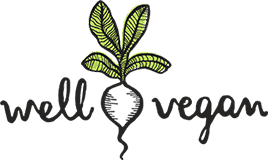It’s October. Can you believe it? If you haven’t already, you’ve harvested pretty much the last of the summer goodies from your garden. I don’t know about you, but I’m actually kind of sad. I so looked forward to heading out to my backyard every morning and seeing how many juicy red jewels my cherry tomato plant had to offer.
While summer and it’s bounty of fresh fruits, veggies and herbs has definitely come to a close, that doesn’t mean you have to stop enjoying the hyper-local food from your backyard. However, your strawberries, zucchini and basil are going to need a little bit of TLC to stay flavorful and nutritious all winter long.
Knowing how to preserve food has been essential to human survival throughout history. Luckily, we don’t have to use the primitive methods our ancestors relied on to keep our garden grub safe to eat months down the road. Here’s a very basic, modern day guide to freezing, canning and drying that’ll help you enjoy the fruits of your labor (literally) through winter and beyond.
Freezing
The key things to remember about freezing fruits and veggies are A) to make sure they’re absolutely fresh when they go in the freezer and B) to keep them at a proper frozen temperature (0 degrees F).
The best way to do this is in batches. For example, spread strawberries in a single on a baking sheet lined with parchment paper and pop it in the freezer. Once the berries are frozen solid, you can consolidate them. This will prevent your food from clumping together during the freezing process. To avoid freezer burn, store fruits and veggies in air-tight containers or freezer bags and remove as much air as possible before sealing.
Before you freeze veggies, be sure to blanch and then submerge them in ice water. Dry thoroughly with paper towels before freezing. Blanching helps retain a vegetable’s color, flavor and nutrients. You can store fruit in the freezer for a year, while vegetables last about 18 months.
Canning
With canning, technique is everything. First, you’ll need to sterilize your jars and lids in simmering water for a few minutes. Then they’ll be ready to be filled with things like jam, salsa and pickles. After loading up your jars with your garden goods, place the lids on firmly, but not too tight. Then lower the jars into a large stockpot of water. Cover the pot and bring it to a boil, allowing the jars to process for about 10 minutes. Finally, remove the jars from the water and set them aside to cool. The jars will automatically vacuum seal as the internal temperature drops. Keep in mind that the food prep technique and cook time will vary between recipes.
For best quality, properly canned foods are best consumed within a year. However, preserves older than a year are still safe to eat – they might just not taste as good.
Drying
Drying food is the oldest known method for preserving food. Of course, ancient civilizations didn’t have access to the electric dehydrators we have today. Dehydrating involves exposing fruits, veggies and herbs to a temperature that’s high enough to remove moisture, but low enough so that they don’t cook. If you’ve ever heard of a “raw vegan” diet, these are the principles it’s based upon.
Something to consider with dehydrating is that you should prepare foods to be dehydrated as you want them to be served. For example, apples cut into slices or pureed for fruit leather. It’s also important to cut pieces in uniform size and thickness so they dehydrate at the same pace.
Dried foods should be stored in a cool, dark place such as your pantry. Most dried fruits can be stored for up to a year at 60 degrees F, while dried vegetables last about half as long.



Gretchen
Are the benefits of nutritional yeast lost when added to home canned vegetable broth?
Dondie
I have a question about canning vegan cooked items. Like thanksgiving meals items, gluten free stuffing with broth- Can you can that kind of item?
Kathleen Charas
I love your site! I have a recipe using Nutritional Yeast Flakes in lieu of cheese in a Queso. Do you see any issues with canning Nutritional Yeast?
Thank you for all ... Kat
Katie Koteen
Hey Kathleen! I love the idea, but I can't say I know enough about the recipe you're using or canning specifics to green light that one 🙂 Let us know how it goes!